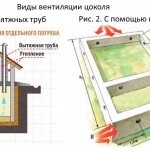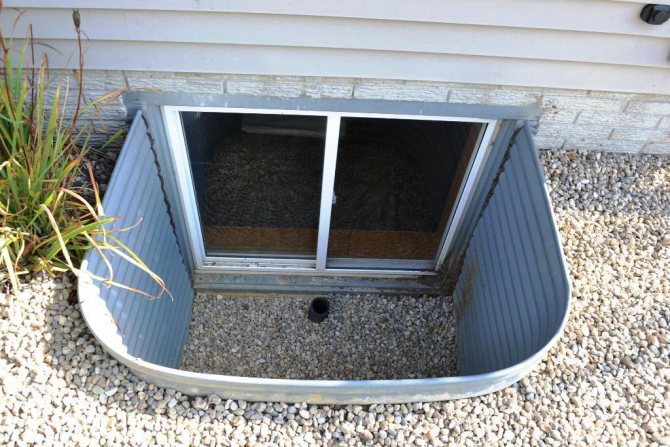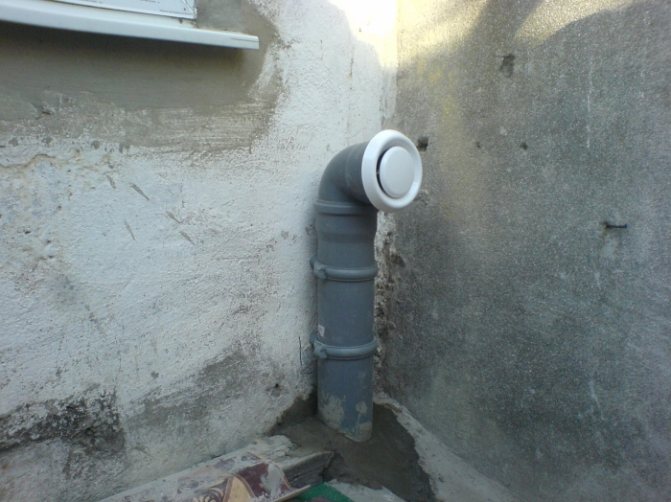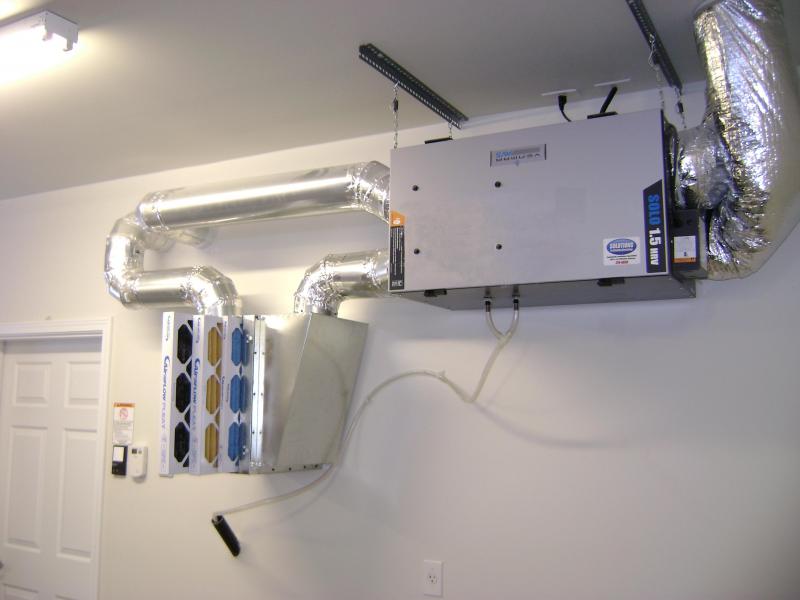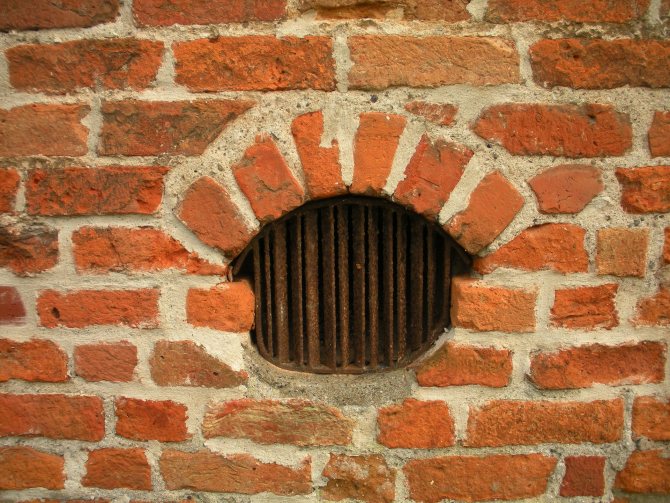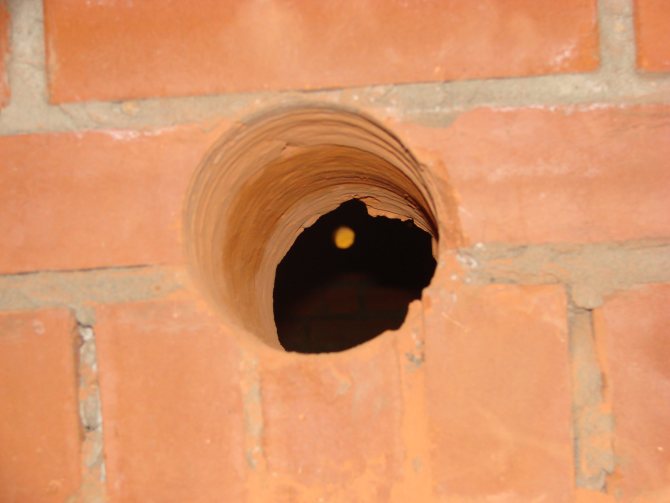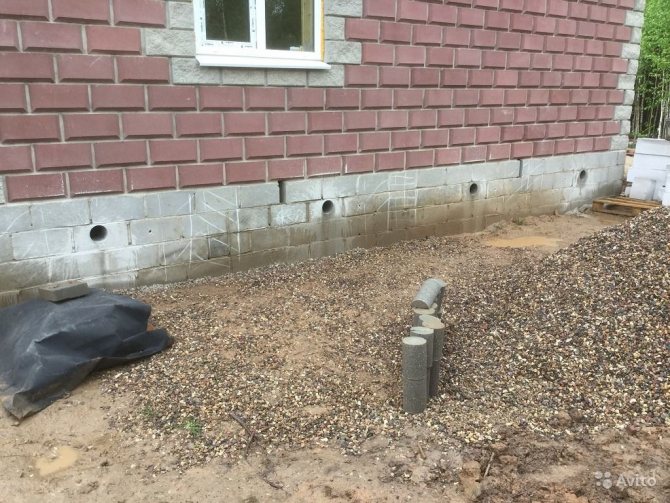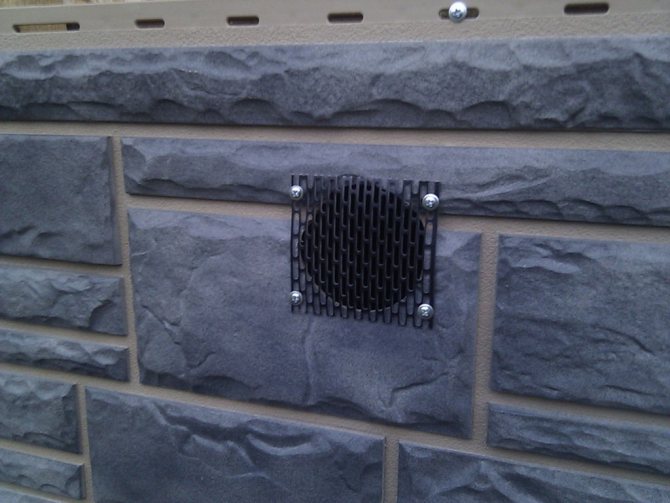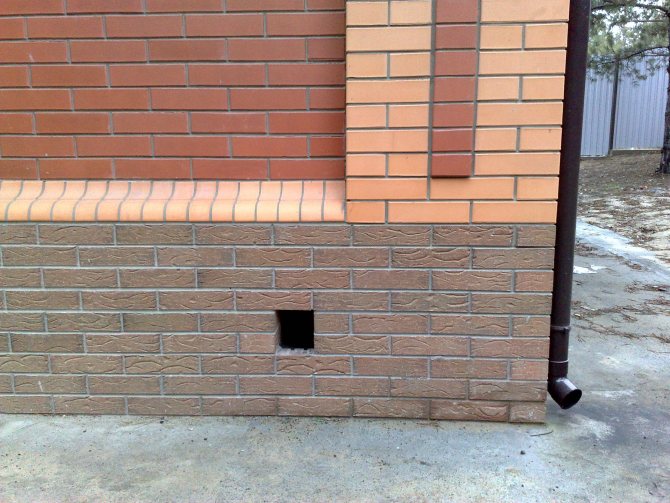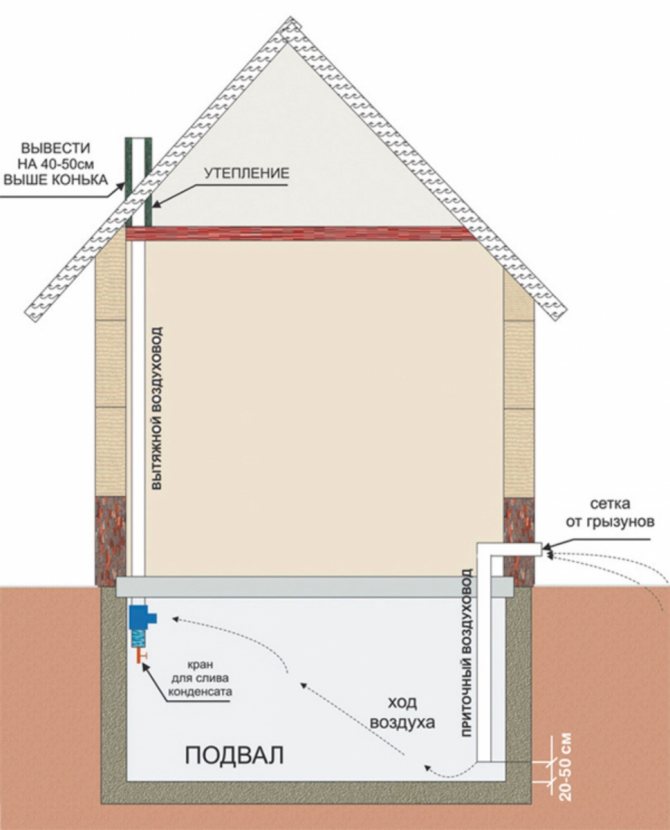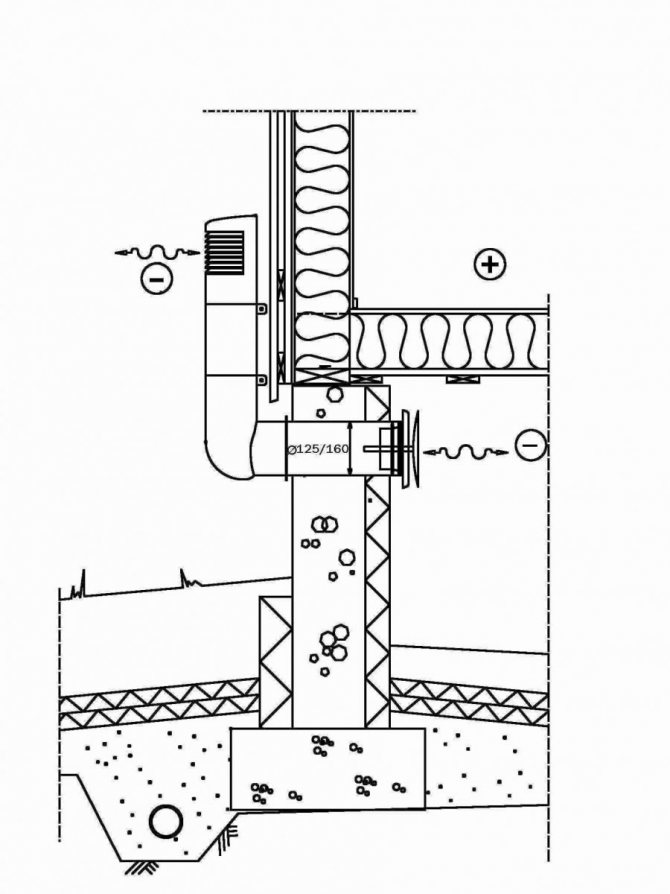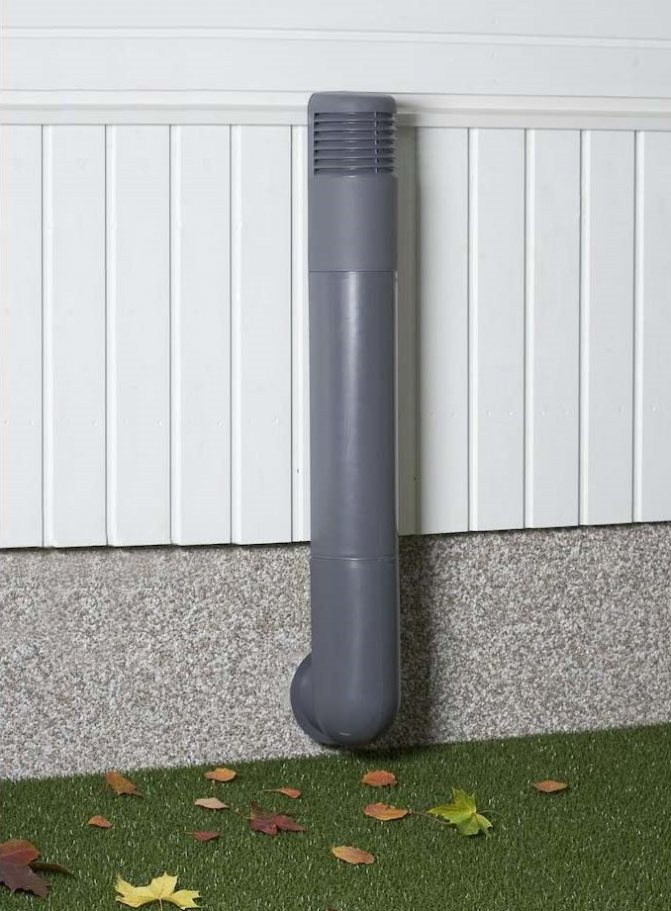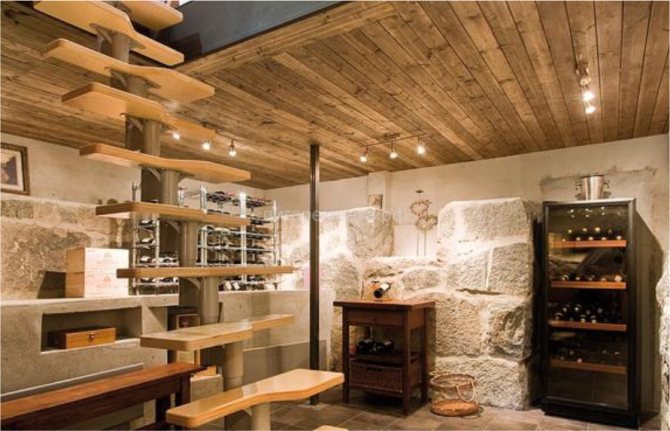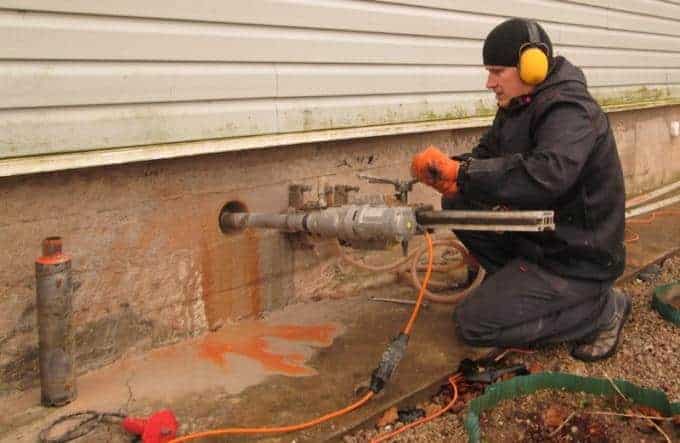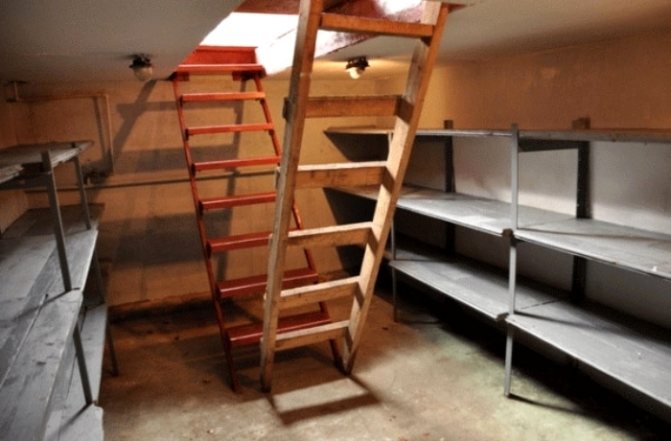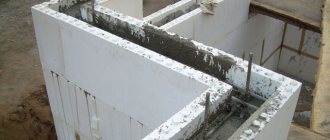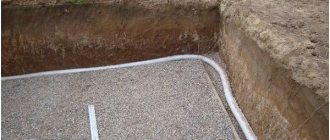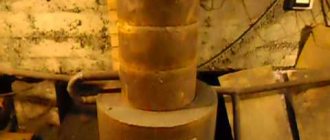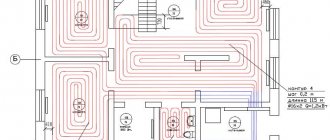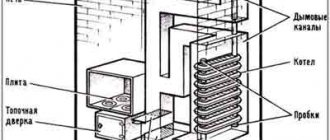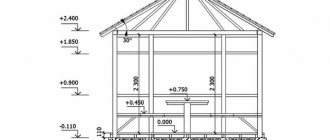Nowadays, a basement room in a private house is far from uncommon. Very often, storage facilities are placed there for unnecessary things and storage of twists. Or, following a newer and more fashionable trend, they will equip a place for gyms and swimming pools. But the purpose of such a room is not so important. In order for such a room to fit at least for something and become truly convenient, you should first think over the system of the correct functioning of the basement in the house with the summing up of all communications. And one of the most important is ventilation.
Features of ventilation of the basement
The presence of the basement floor in the layout of the house makes it virtually the foundation. Therefore, it is quite obvious that colossal pressure is exerted on the walls and ceiling from all sides. For the correct arrangement and rational functioning of such a room, the following factors must be taken into account:
- Calculation of loads on walls and its uniform transfer;
- Thermal insulation of the entire room;
- Optimal ventilation
- Air quality, which directly depends on the composition of a particular soil;
- Hydro and gas insulation.
- Temperature regime and humidity level;
- Electricity supply.
As stated above, the air quality in the basement room directly depends on the soil where the house is located. Very often, in the course of irreversible organic reactions, harmful gases, including radon, accumulate in the basement.
Harmful impurities cannot be determined by smell or other indicators, but after a long stay in such rooms, a rather serious malaise of the body appears. And with prolonged exposure and the development of the worst cases, serious diseases can form.
Therefore, it is necessary to think over the basement ventilation system in the house. The most optimal ceiling height in the basement floor is 2.1 m. It is important to take into account that the room should only be partially underground. To be able to install windows. But not for natural light, but for the most primitive ventilation system - ventilation.

However, such a system cannot be perceived as a full-fledged option. Very often it is taken as an axiom that even on the hottest days of summer it is quite cool in the basements. Of course, this is very convenient, especially when the room was intended for storing supplies. Unfortunately, this is one of the proofs of an insufficient ventilation system. In addition, if you do not approach the issue properly, moisture can form in the room, and then bacteria, fungus and mold.
In a private house
Based on the above, it becomes clear that ventilation in any basement is a must. In this regard, it is worth carefully considering the question of what kind of ventilation system will be used there:
- Natural. The arrangement of such ventilation should be thought out in advance, even at the stage of creating a house project. It is an ordinary pipe that is led out into the street and the air circulates due to the pressure difference between the street and the room. The efficiency of such a system is quite relative and depends on many factors, including the strength of the wind and weather conditions. For small basements, it will be a very good option;
- Forced. In this case, the name speaks for itself. Air movement occurs due to special fans, which in the course of their work pump air from the street and remove stagnant air from the basement. Ideal for any space;
Of course, now technology has gone ahead a long time ago.Therefore, the heating system can even be responsible for the room temperature and air humidity. But such installations are very expensive and difficult to maintain, because they have a multi-stage filtration system.
While a natural or forced system with the help of a fan, you can install yourself and maintain yourself. However, another important factor is that you need to carefully fence off the ventilation holes with special gratings. They do not prevent air from getting inside, but they will protect against rodents and street debris.
In an apartment building
Ventilation in an apartment building is also divided into forced and natural. It is located in each riser, goes to the kitchen and toilet. That is, those places in apartments where the highest concentration of unpleasant odors.
Special hoods are installed on such systems and only qualified specialists can service them. In new homes, there are complex split systems that are responsible for temperature conditions. Older buildings often have conventional fans to circulate air.
Natural ventilation in an apartment building is presented in the form of a special channel leading to the toilet and kitchen of each apartment. Also, holes come out of the basement, the number of which directly depends on the area of the basement room.
What to do if during the construction of the house the air vents in the basement were not equipped
When the construction of a house is carried out without observing the rules or by persons who are not versed in some issues, a situation may arise when the air vents are simply forgotten when arranging the foundation. But the construction technology involves laying them together with the construction of the foundation. There are several options for correcting construction mistakes.
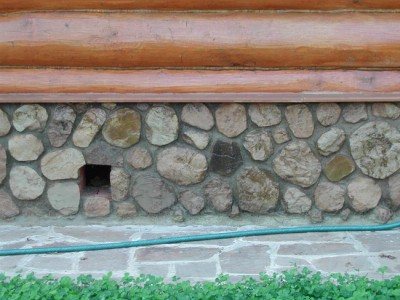

The air must be at least 15 cm from the ground level.
It is possible to pierce (or cut through) the air vents after the completion of construction work only by a team of professional builders who have all the necessary equipment for the procedure. These specialists will drill a hole that will be approximately 150-250 mm in diameter. The cost of the work carried out will depend on what material was used in the construction of the foundation. The width of the wall to be drilled and the required number of holes will also be added to the cost of the work. Provided that the part of the foundation that protrudes above the ground is made of brick, it is possible to carry out the airflow on its own. But it should be borne in mind that this process is quite laborious and a minimum set of tools is required: a puncher, a sledgehammer, a chisel.
In many European countries, the floors of the first floor are lined directly on the ground, while work on the arrangement of the underground is not carried out. This method eliminates some of the problems that may arise during the arrangement of the floor, made according to the "overlap" principle. Floors that are laid on the ground do not suffer from oversaturation of moisture and condensation does not accumulate on them, due to which mold does not form. At the same time, such a laying technology allows you to reduce the cost of building materials by lowering the height of the building.
Possible problems in the absence of supply and exhaust ventilation
As mentioned earlier, the lack of ventilation in the basement of a residential building can lead to many problems. Of course, the worst case scenario is health problems due to constant exposure to radon gas. In large quantities, it is a highly radioactive substance that has serious health effects.
But besides that, it is worth thinking about smaller-scale problems. If the basement floor was meant as a storage room for unnecessary things or a warehouse for supplies, then in the absence of natural supply and exhaust ventilation, it will not be able to serve such purposes.Firstly, dampness and high temperature. She will completely destroy it from the stock of a good harvest in a couple of days. Twists also cannot be stored for a long time in such conditions. Of course, all things will rot and become unusable over time.
It is highly likely that fungus and mold, harmful insects will start. And, of course, such conditions can cause serious damage to the foundation and floors.
How to make ventilation of the basement floor using air vents
If it was decided to make a basement room even at the stage of developing a house project, then the ventilation system should be developed in advance. Naturally, the so-called "air vents" are the cheapest option and it will be very simple to make basement ventilation even on your own. When planning, you just need to correctly calculate the number and diameter of holes, and the main driving force of this mechanism will be the traction force.
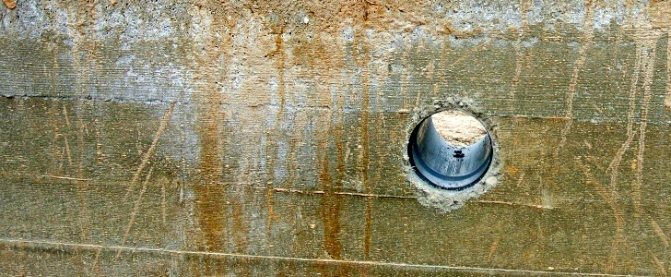

Factors to consider when planning basement ventilation:
- Consider the depth of the foundation;
- Proximity to waste water;
- The amount of precipitation grazed at different times of the year;
- Changes in temperature, pressure;
- The diameter of the vent itself must be calculated from a ratio of 1/400 of the area of the basement;
- The diameter should be 12.5 cm or more;
As practice shows, for a small room, two holes on different sides are enough. For large ones - two air vents for every four meters. If desired, such a ventilation system can be made controllable by installing special dampers. In summer they are almost always kept open, in winter they are covered. In severe frosts, small cracks are left.
It is important to take into account that, nevertheless, such a ventilation system is not suitable for large areas and rooms where supplies are planned to be stored. Since the supply of fresh air is limited in winter, food will start to spoil.
Ventilated basement in a wooden house
Layout of ventilation ducts.
As in multi-apartment buildings, ventilation openings (air vents) are required in wooden residential buildings. They are often performed in embedded logs or timber. They are cut out between the first crown and the second. If the construction of a frame structure is underway, then a ventilation window is laid between the base of the house and the very first log (as a rule, such a house has only a few crowns). Another reason for such a ventilation device is that the plinth lags behind the ground by about 400 mm.
In a wooden house, air vents are arranged in the following way. First of all, they mark the future ventilation window, after which, using an ordinary saw or chainsaw, they make a through cut in the embedded logs. After the work done, the hole made can be made using ordinary boards, from which a box is made according to the shape and size of the hole. It is done in order to hide the slices.
If the construction of a house is carried out from bricks, then for the equipment of the ventilation opening it is necessary to leave an area equal in height to ½ brick, and in length - the size of the brick block itself. You can equip ventilation holes directly during the laying of the foundation. To perform this procedure, you need to take a plastic pipe, which in length will be equal to the width of the foundation formwork.
The approximate dimensions of the vents in the basement of the house.
Accordingly, if you do not have pipes of a suitable size, then you can cut a longer one, or vice versa, set a pipe of a smaller size. Only in this case it will be necessary to make the pipe connections very tightly so that cement mortar does not penetrate into it. Pipes of suitable size are installed in the foundation formwork, but at the same time make sure that they lag behind the extreme parts of the foundation by at least 100 mm. Sand is poured into the pipes themselves so that they do not crack during the pouring of concrete.
And when the formwork is removed from the foundation, the sand is very easily cleaned out. Using this method, the ventilation holes made will look more aesthetically pleasing on the facade and will not spoil the appearance of the building. It is not recommended to use wooden formwork instead of pipes for venting, since wooden parts, while the foundation is drying (about 1 month), adhere firmly to the concrete solution under pressure, and it will be very difficult to remove them later without damaging the base of the foundation.
Other ventilation methods
It may well be such a situation that in the presence of a basement it was not possible to develop a natural system. Either it does not cope with its task or a mistake was made in the design. In any case, forced air exchange is indispensable.
In order to install a forced ventilation system in the basement of a private house, you must:
- Install supply fans in the wall;
- Connect the fans to the exhaust ducts;
- Or, alternatively, use the most common fan that you need to put near the duct.
It is important to take into account that pipes in such a system should be of a smaller diameter, because air moves through them much faster than with natural air exchange.
For an efficient installation, consider the following:
- The chimney should be longer and higher than the ridge;
- The diameter of the air outlet can be adjusted to the intensity, the larger the diameter - the more actively it works;
- If the room is damp, then quicklime will help with this. Put in a large container for a couple of days indoors so that it absorbs excess moisture;
- It is best to air the basement in bad and windy weather.
If the entire system is installed correctly, the basement will function normally. The most optimal temperature will be 16-21 degrees, and the humidity will be 50-60 percent.
Tools for creating ventilation in the plinth
The ventilation of the basement is quite an important point, because the through ventilation present is not enough to provide clean air in the room. But quite often the owners of private houses do not have the financial resources or the desire to entrust the creation of ventilation to professionals, in this case, you can create a ventilation system with your own hands.
In this case, you should start by preparing the necessary tools, which include:


To create ventilation in the plinth, you need to prepare a rotary hammer and many other tools
- puncher;
- pipes through which air masses will move;
- gate-type dampers, as well as PVC mesh;
- a piece of chalk;
- deflectors;
- jalousie;
- special elements for air flow control;
- concrete as well as sand;
- the container where the concrete solution will be stirred;
- trowel and spatula.
With these tools, you can create two vents:
- exhaust;
- supply and exhaust.
Expert advice
Ventilation of the strip foundation is an extremely important aspect that must be taken into account when building a private house. To avoid corrosion of the foundation materials and the basement itself, it is better to refrain from blocking the air in the ducts, even in low temperatures. The soil itself will not allow the room to freeze, and as an auxiliary option, good insulation can help. If the basement floor was planned as a storage room, the question of a comfortable temperature is secondary. The main thing is to adjust the ventilation system so that dampness does not appear. It is very difficult to get rid of it later, but it is very easy to breed mold bacteria in the room.
Therefore, even if there is some kind of home-made system of dampers in the air ducts, it is worth making sure that the room is first of all well ventilated in winter.

